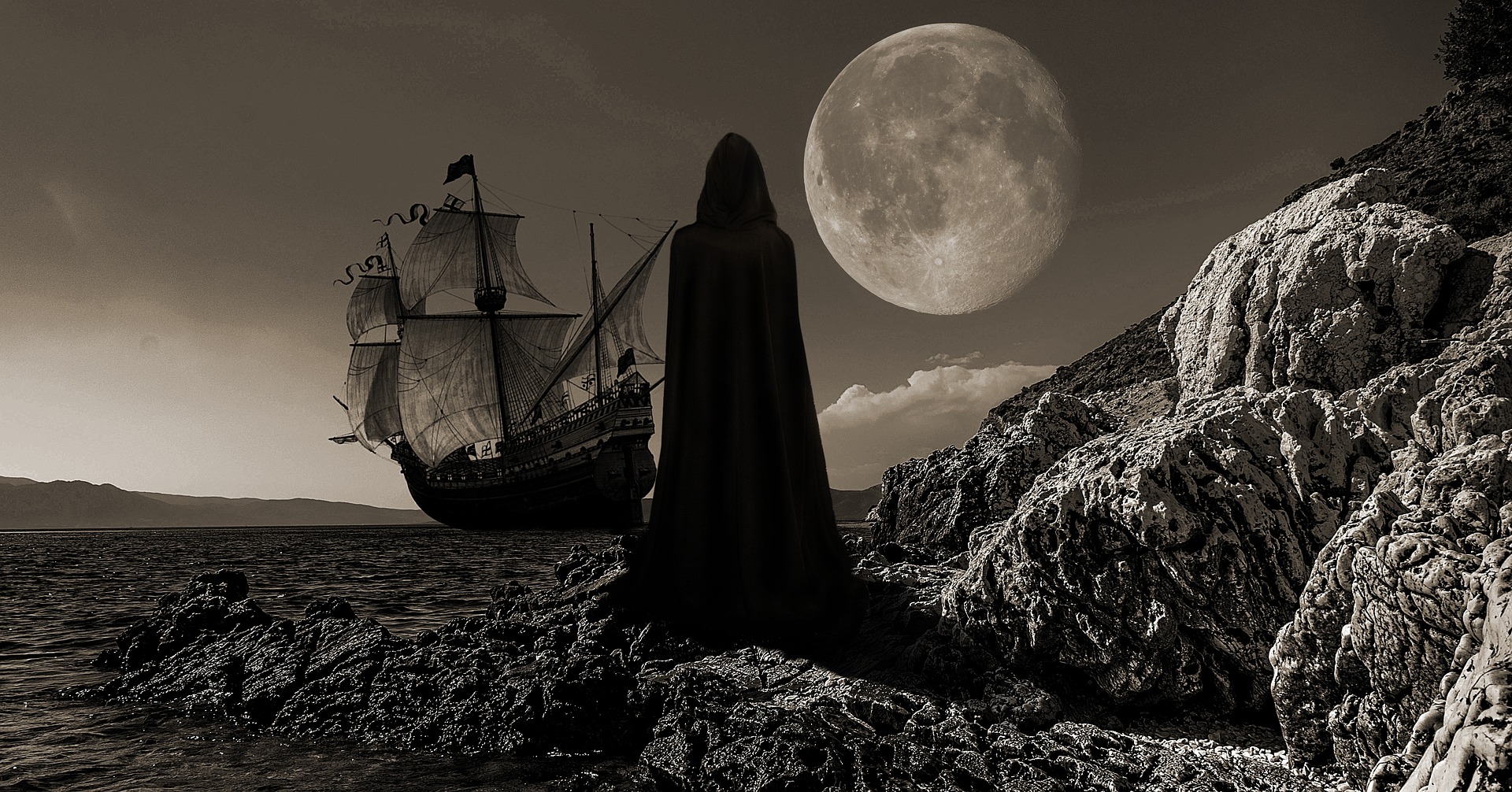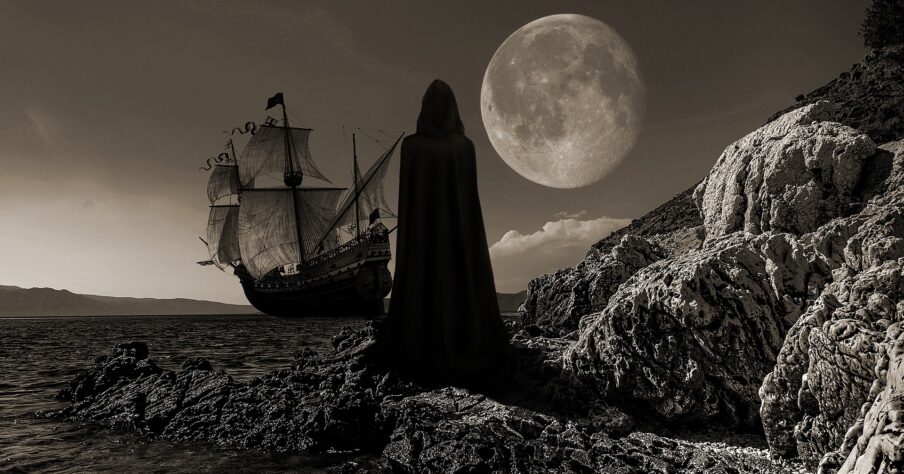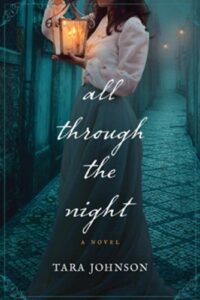By Tara Johnson, @TaraMinistry

A good villain makes you hate him. A great villain makes you fall in love with him.
Sounds strange, right?
Perhaps, but the difference between a ho-hum story and one that dazzles can often be found in the strengths and weaknesses of its villain.
Darth Vader, Hannibal Lector, the Joker, Norman Bates, Professor Moriarty, Mr. Rochester, Dr. Frankenstein, Lady MacBeth, Thanos, the Wicked Witch of the West. All these characters conjure up images, colors, feelings, memories, humor, and fear.
I’m a firm believer that great stories aren’t plot-driven, or even character-driven. They are conflict-driven, and the villain is the hinge on which your story’s conflict swings. For that reason, villains are just as important as the good guys. They are the adversaries that challenge your hero, his goals, dreams, and ultimately keep your readers flipping the pages. So why do so many of us focus all our time and attention on our protagonists, but slap our bad guy into the fight with so little thought?
Bestselling author Dan Brown advocates for writing your villain first—even before your hero—because it is the villain who will make the protagonist heroic. There is no beauty without pain, no peace without turmoil, and no heroes without massive adversity.
I tend to compare two-dimensional, stereotypical characters to their more complex counterparts the way one would contrast a China doll—with its porcelain features and lacy dresses—to a paper doll. The former can withstand pressure with no change to its contours or textures, but the latter crumbles with too much time and handling. Our villains should be robust, not a cheap copy that crumbles.
But how to achieve such a task?
Steps to Crafting a Knock-Out Villain
- Your villain always believes he’s the hero in his own story.
Gone are the days of Snidely Whiplash laughing maniacally while twirling his mustache as he ties a girl to the railroad tracks. Very few people are pure evil just to be evil. Instead of creating a flat character, craft a believable, heart-breaking backstory on how this person ended up with the beliefs they did.
What was their family like? What adversities did they face? What wounded them? What lie do they believe about themselves? Somehow, someway, the world taught them to look at life through a shaded lens. Find out why. Each character has their own dreams, goals, and motivations. No one thinks of themselves as a villain, but a survivor.
Digging deep into an antagonist’s backstory has become a huge market. From Elphaba in Wicked, to Joaquin Phoenix’s Joker, audiences are anxious to know what makes a troubled character the way they are. And although we may not agree with their actions and behaviors, we develop sympathy for them, are repelled by the horrid circumstances that shaped them, and may even eventually end up rooting for them as the story unfolds. When the reader’s emotions are bouncing back and forth between love and loathing, your novel’s conflict cranks up to a new level.
It’s the same for humans as it is for our characters…we usually believe our thoughts, opinions and choices are on the side of right. That’s your job as a writer…to make the villain’s story as believable and ‘right’ as your hero’s.

- Think of your antagonist as the potential outcome (ying/yang) for your protagonist.
Experienced authors often mention that a villain should contrast with the protagonist, but in truth, many villains are wired exactly like the hero, yet make different choices. General Zod is exactly what humanity fears Superman could become (an alien out to dominate or destroy humanity). Darth Vader is the Jedi knight who gave in to the dark side of The Force. (debravega.wordpress.com) Internal conflict should always be the root of external battles.
- A strong villain will have some kind of credibility.
Perhaps they did something good in the past that provided them a solid reputation within the community. (police officer, firefighter, politician, etc.) Those ‘good things’ give them tremendous power and makes it harder for your hero to defeat them. (ex. President Snow in The Hunger Games, Hitler) On a side note, they can’t be so powerful no one can stop them, but don’t make it easy on your hero. Look for one or two points of vulnerability in your villain and let the hero exploit it. (Ex. Dorothy throwing water on the Wicked Witch) You want your readers to wonder, “How will the good guy get out of this?”
- Don’t forget the humor.
What is humor? Boiled down to its essence, humor is about shattering assumptions. Villains are fun. They’re funny. When Darth Vader goes for a mid-air choke hold, we know somebody has ticked him off. What we don’t expect is his ability to get rid of his foes with a snap of his wrist. We love Ursula (The Little Mermaid) for her bombastic style and sarcastic barbs. Vizzini (The Princess Bride) is a cult favorite because of his nasal voice, long diatribes, and quirky catch phrase “Inconceivable!”
Boring villains make for bored readers.
- Make them vulnerable.
Show them in gentle relationships. Spoiling a dearly loved child. Petting their cat. Lavishing attention on a grandparent they would do anything to protect. Even the Grinch had a dog he adored.
- Introduce your villain with a bang.
No meek and mild sneaking into the story for these guys. Make sure their first scene packs a punch. This will send your readers a clear message this fellow is bad news. (Ex. Charles Dickens’ David Copperfield. The arrival of antagonist Uriah Heep is jarring because his politeness is overshadowed by a face so shocking and ugly, it is described as “cadaverous.”)
- Flip the script.
Sometimes, you can set up the villain to be one character and later find out the real aggressor is another. The greatest jolt is for your hero to put all their trust in their closest ally, only later to discover their friend was the true antagonist. (Ex. In Braveheart, Robert the Bruce seems to be an ally of William Wallace, and then betrays him.) Worse still is for your hero or heroine to learn they are their own worst enemy. (I’m looking at you, Scarlett O’Hara.) When you experiment with other types of antagonists— society, a confidant, the weather, or even a setting—it will give your characters an intriguing maze of conflict to muddle through.
When in doubt, take inspiration from real life. Study controversial figures from history, serial killers, and celebrities who seem to have the world set against them. Read biographies and study psychological disorders. Learn what makes people tick. In so doing, you’ll find a treasure trove of idiosyncrasies that will make your characters live far beyond the story’s final page.
With her stammering tongue and quiet ways, Cadence Piper has always struggled to be accepted. After the death of her mother, Cadence sets her heart on becoming a nurse, both to erase the stain her brother has left on the family’s honor and to find long-sought approval in the eyes of her father. When Dorothea Dix turns her away due to her young age and pretty face, Cadence finds another way to serve . . . singing to the soldiers in Judiciary Square Hospital. Only one stubborn doctor stands in her way.
Joshua Ivy is an intense man with a compassionate heart for the hurting and downtrodden. The one thing he can’t have is an idealistic woman destroying the plans he’s so carefully laid. When the chaos of war thrusts Cadence into the middle of his clandestine activities, he must decide if the lives at stake, and his own heart, are worth the risk of letting Cadence inside.
Everything changes when Joshua and Cadence unearth the workings of a secret society so vile, the course of their lives, and the war, could be altered forever. If they fight an enemy they cannot see, will the One who sees all show them the way in the darkest night?
Tara Johnson is an author and speaker, and loves to write stories that help people break free from the lies they believe about themselves. Tara’s debut novel Engraved on the Heart (Tyndale) earned a starred review from Publishers Weekly, and was a finalist in the Carol and Christy awards. In addition to being published in a variety of digital and print magazines, she has been a featured guest on Voice of Truth radio, Enduring Word radio, television and podcasts. She is a history nerd, especially the Civil War, and adores making people laugh. She, her husband, and children live in Arkansas.


